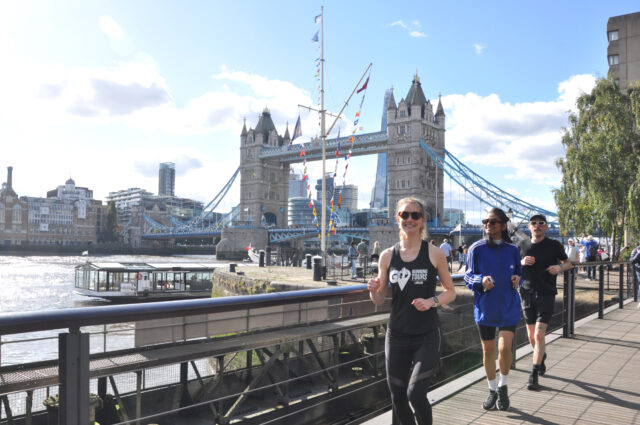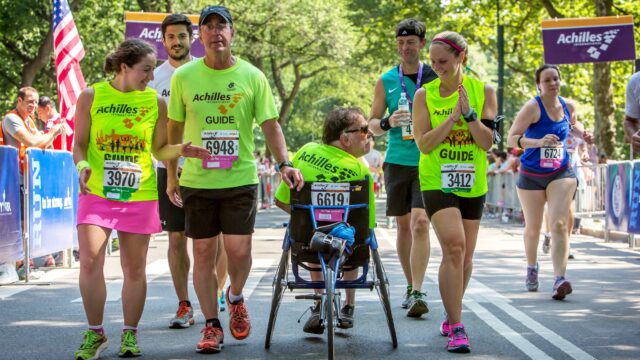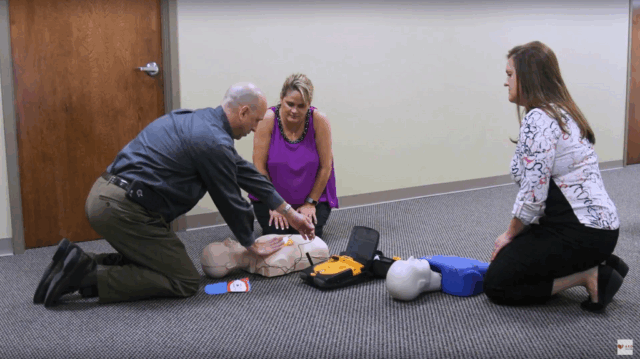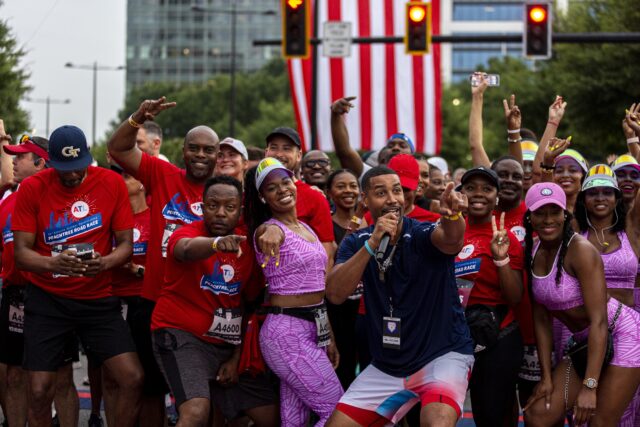Video

5 Questions with Anthea Dexter-Cooper, Executive Director of RunVermont
Jay Holder chats with Anthea Dexter-Cooper, the new Executive Director of RunVermont. Appointed in November 2024, Anthea brings a dynamic legal and environmental advocacy background—previously serving as a senior attorney at the Conservation Law Foundation—to helm Vermont’s premier nonprofit in promoting running as a lifelong pursuit. Having spent over a decade in legal practice before leading RunVermont’s staff, board, and its flagship events and programs, she’s deeply committed to community fitness and inclusive access to running. Learn about her vision for the M&T Bank Vermont City Marathon & Relay, strategies to grow participation across all demographics, and how her unique experiences will shape the organization’s future impact across Vermont.

5 Questions with Lena Andersson, Founder and CEO of Go! Running Tours
Running USA's Leah Etling sat down with Lena Andersson, the visionary behind Go! Running Tours — a global network that combines sightseeing with sweat, offering guided running experiences in cities around the world. From the company's beginnings to leading a worldwide movement of running tourism, Lena shares her journey, insights on entrepreneurship, and the power of exploring cities one stride at a time.

Running USA and Achilles International Webinar: Best Practices for Making Your Race More Accessible
Organizing a race is more than just planning a fast, fun course—it’s about building an event that embraces all athletes, including those with disabilities. On June 10, 2025, Achilles International teamed up with Running USA to host a webinar titled “Best Practices for Making Your Race More Accessible.” Find key takeaways on the Achilles International website here
Panelists Francesco Magisano, Director, NYC Metro, at Achilles International, and Janet Patton, Vice President of Strategic Partnerships, Achilles International, offered a wealth of actionable insights across every stage of race planning—from registration to post-finish celebrations.
1. Registration
Simplify sign-up: Ensure your online process and race forms are compatible with assistive technologies and include accommodations for guide runners.
Gather participant info: Provide options to disclose wheelchair use, handcycles, guides, etc., to tailor support.
Show representation: Use inclusive images and proper alt text to reflect diverse participants.
Facilitate communication: Allow participants to request a guide runner directly and consider offering guides free of charge.
Centralize resources: Create a dedicated web page outlining athlete resources and maintain open email contact for accommodation questions.
2. Pre-Race Planning
Thoughtful logistics: Include accessibility in corrals, announcements, start times, and volunteer/staff training.
Educate volunteers: Teach the difference between racing wheelchairs, handcycles, etc., so support teams and spectators understand and celebrate appropriately.
Clear communication: Warn participants and staff about arrival times for wheeled athletes and potential safety issues.
Facility readiness: Ensure accessible restrooms and bag drop areas; consider ASL interpreters and sensory calm-down zones.
Course insight: Alert athletes and guides beforehand about terrain challenges or layout changes.
3. On-Course Considerations
Barrier-free route: Limit curbs, stairs, narrow paths, cobblestones, and sharp turns—adapt or detour where needed.
Safety protocols: Enforce speed rules, use warning flags or signage, and assign bike escorts when appropriate.
Mechanical aid: Station quick-repair crews for wheelchairs/handcycles; flag low-profile handcycles for better visibility.
4. Post-Race & Celebration
Accessible finish area: Design flow patterns that accommodate adaptive equipment and personal assistants.
Equitable ceremonies: Structure award ceremonies and recovery zones with wheelchair users in mind.
Visible signage: Ensure directional and informational signs serve all athletes.
Acknowledgment: Recognize athletes with disabilities in speeches and awards to elevate inclusion.
Key takeaways: You don’t have to implement everything at once. Even one simple tweak—like adding an accommodation email or guide request field—can make a meaningful difference. These incremental steps pave the way for a more inclusive race experience.
When in doubt, treat athletes with disabilities with the same patience, respect, and care you’d want. At the heart of inclusivity lies empathy—and every thoughtful adjustment enriches the event for all participants.

5 Questions with Keith Hildebrandt, President and Founder of AED Brands
We sat down with Keith Hildebrandt, the President and Founder of AED Brands, to explore a powerful new partnership with Running USA. Under Keith’s leadership—having launched AED Brands back in 2004 with a mission to support compliant, life-saving AED programs nationwide—AED Brands now offers Automated External Defibrillator (AED) rentals specifically tailored for running events through a collaboration with Running USA. Keith shares how this rental program empowers race organizers to enhance on-course safety without the burden of permanent AED installations—making cutting-edge defibrillator access flexible, affordable, and reliable. Learn more as he outlines the program's design and how it’s elevating athlete safety at races across the country.

5 Questions with Ronnel Blackmon, Event Emcee
A high-energy host known for his magnetic presence and deep connection to the running community, Ronnel Blackmon brings years of experience as an emcee, announcer, and race day personality at premier running events across the country. His dynamic style and passion for endurance sports have made him a favorite among athletes and race organizers alike. Get to know the emcee of the 2026 Running USA Industry Conference in this new 5 Questions interview with Jay Holder, Running USA Executive Director..